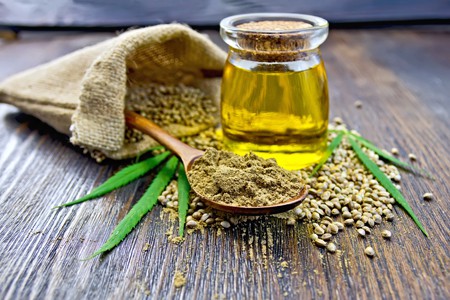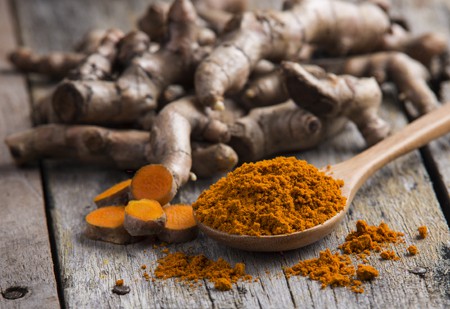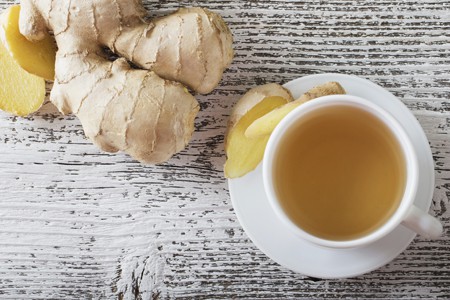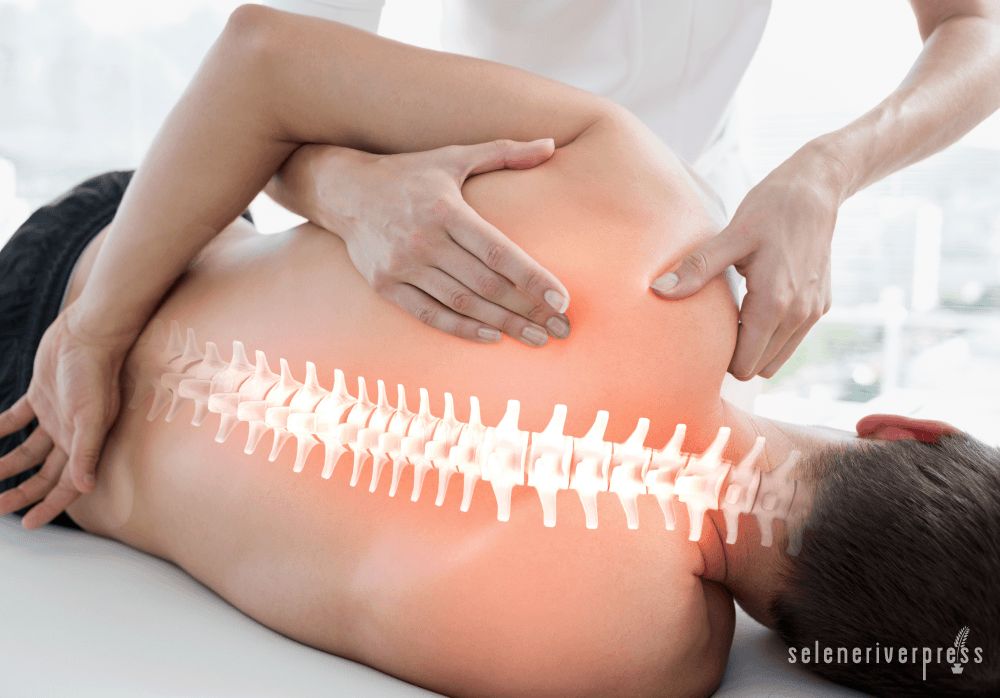Pardon the title, as it may sound rude, but I truly believe that each one of us can identify with the phrase “pain sucks.” Because I’m no exception, I thought it would be helpful to update my readers about some tried and true traditional pain remedies and also discuss one particular not-so-new remedy that’s becoming very popular among people seeking relief from both acute and chronic pain.
So what is this not-so-new remedy? Cannabidiol (CBD) oil, tinctures, and herbal infused salves. Cannabidiol is a non-psychoactive, tetrahydrocannabinol (THC)-free compound derived from marijuana. Or, in polite company, the Cannabis sativa plant!
Disclaimer: I’m new to CBD oil and don’t consider myself an expert when it comes to claims that this compound is antibacterial, or that it can relieve pain, promote bone growth, reduce inflammation, inhibit cancer cell growth, reduce seizures and convulsions, relieve anxiety, slow bacterial growth, etc. For that reason, I encourage you to do your own research and consult an experienced therapist or person familiar with the use of Cannabis sativa for any purpose.

After my interview with Jackson Tine, one of the owners, I concluded that the company I choose to introduce to my readers at this time, Industrial Hemp Supply, is a reliable source. Debbi’s Aromatherapy, my own organic essential oil supplier, also uses this company in making her own cannabis infused herbal salve.
After hearing about CBD infused herbal salves and doing some cursory research on it for a recent blog post about gardening pain, I thought I should write about CBD remedies along with some other wonderful tried and true traditional pain relief methods. CBD oils, tinctures, and herbal infused salves seem to be used primarily for a common type of pain, which is structural pain (bone, muscle, and joints). CBD oil can also address organic, neurological, and emotional pains that are very real, but including them would take up too much space for a general blog post. So I will stick to structural pain management.
Pain Categories—Acute and Chronic
Acute Pain: This type of pain often results from tissue damage, such as a skin burn or broken bone. Acute pain can also be associated with headaches or muscle cramps. It usually goes away as the injury heals or the cause (stimulus) of the pain is removed. Nerve cell endings, or pain receptors, are at the front end of pain sensation. These neurotransmitters may also stimulate nerves that lead back to the site of the injury. This response prompts cells in the injured area to release chemicals that not only trigger an immune response but also influence the intensity and duration of the pain.
Chronic Pain: This type of pain generally persists after an injury heals. It tends to be related to a persistent or degenerative disease and/or long-term pain from an unidentifiable cause. Chronic pain may be caused by the body’s response to acute pain. In the presence of continued stimulation of pain receptors, it may be more difficult to control. For example, the stimulus cannot be identified in as many as 85 percent of individuals suffering from chronic lower back pain.
Structural Pain Remedies
When I recommend remedies for structural pain disorders, my thoughts always go to those who have pain or discomfort in their bones, muscles, and joints. A good description of this specific pain is described by Rick Olderman in Fixing You: Back Pain. He states: “I typically see back problems such as herniated or bulging disks, spinal stenosis, arthritis, facet syndromes, and others. I call these structural diagnoses because they describe a physical problem that can be seen on an MRI or other scan.”
Based on Olderman’s description of structural pain (and because a personal testimony may be more helpful than a studied discussion), permit me to share my personal journey of coping with intense physical/structural pain and discomfort, which led to my inability to do many things that were, at one time, a piece of cake for me—including very normal things like bending, kneeling, standing, walking, and even lying in bed for any extended length of time. This happened after a disk injury I incurred when I was in my late 30s, and the experience taught me some painful lessons. After seeing several highly qualified orthopedic surgeons, I was told that I would require some very risky surgeries.
I was unwilling and fearful to take that chance. And, like millions of other people, I was yet unacquainted and uninvolved in the healing arts. As such, I relied on over-the-counter anti-inflammatory agents, such as ibuprofen, which I’d been warned was dangerous, to say the least. (You can read more about those dangers here.) I also tried and spent way too much money on massage, chiropractic, exercise equipment and lessons, and many other less-invasive treatments with some but no real lasting pain relief.
Some years later, I was introduced to Standard Process whole food supplements. Soon I was taking supplements that are particularly relevant to structural repair and maintenance, which I’ll list later in this article. I also made some very specific diet changes and, after happening onto a book titled Beyond Aspirin by Thomas M. Newmark and Paul Schulick, I chose to use some of their recommendations.
Beyond Aspirin was a tremendous eye-opener on the effect of two enzymes (COX-1 and COX-2) in the pain puzzle that plagues so many of us. After reading it several times, I incorporated some—not all, but some—of its recommendations. So to sum up, I addressed my pain with the three suggestions I mention above:
- Incorporated a certain group of whole food Standard Process supplements into my life
- Made a dramatic change in my diet
- Adopted some specific recommendations from the book Beyond Aspirin
As a result, I’ve been able to maintain tolerable and, at times, relatively pain-free days as long I stay on my protocol and don’t overdo it on any activities that will land me in bed. Most importantly, surgery isn’t even a consideration anymore (smile).
I now realize that in seeking pain relief and/or healing, we need to develop our own personal protocol. (A protocol is best defined as a system of rules that explain the correct conduct and procedures to be followed in certain situations.)
I suggest that if you too want pain relief or possibly even complete healing, developing your own personal protocol can provide consistent nourishment to the injured area or help you address your condition over the long-term. You can then test and modify your protocol as it becomes necessary. This is very important, whether the condition you’re dealing with is a structural, organic, neurological, or emotional imbalance.
Without a protocol, regardless of the condition, you may only flounder from pillar to post and never achieve any real and lasting relief. You may even exacerbate the condition you’re trying to help! Protocols can be developed by trial and error, as I developed mine, or you can find a skilled holistic practitioner to guide your progress.
My Personal Healing Discoveries
Discovery of the COX-2 Isoenzyme
“In 1991, scientists led by Dr. Philip Needleman made a crucial discovery: the COX enzyme was not one enzyme, it was actually two. Both the COX enzymes had the ability to metabolize, or burn, a particular fat in the body. The enzyme that came to be known as COX-1, however, was the one responsible for maintaining housekeeping balance—scientists called it homeostasis—in our kidneys and stomach. The other expression of COX, not surprisingly an isoenzyme called COX-2, was identified as the one responsible for creation of inflammatory prostaglandins out of the fat called arachidonic acid. In the ensuing years, researchers raced to locate a ‘silver bullet’ that would disrupt the inflammatory COX-2 pathway without unduly inhibiting the protective housekeeping features of COX-1.”
—Beyond Aspirin, Thomas M. Newkirk and Paul Schulick
According to the book, the results from this discovery ended up with Monsanto jumping on the bandwagon, and that led to the creation of the devastating drug Celebrex, which we now know may cause numerous serious side effects.
Having read Beyond Aspirin, I was excited to learn more about the COX-2 inhibiting herbs it discussed. I started my research by first looking into the so-called bad boy arachidonic acid (pronounced “ar·a·chi·don·ic acid”). I’ve since discovered that this is a critical fatty acid that works in balance with omega-3 fatty acids. In fact, arachidonic acid is the most active component of vitamin F, which drives calcium into the cytoplasm and into all the cells of the body outside of the bloodstream. Once you truly understand arachidonic acid, you won’t be surprised to learn that it’s a vital constituent of mother’s milk.
At first I was truly despondent; it seemed that I would need to stop eating wonderful foods like chicken, eggs, and beef, plus other foods that I enjoyed and still enjoy. But since Needleman’s paper was published, there have been many more studies on arachidonic acid (or AA) and COX-2 that allowed me to no longer fear this particular omega-6 fatty acid. And now I have Dr. Royal Lee and Mark R. Anderson as a source of information on the long misunderstood nature of vitamin F and arachidonic acid. Mr. Anderson will be presenting on this topic and more at his upcoming annual Back to School for Doctors seminar this September 24–25 in Denver.
Next, I’ll address my COX-2 conclusions below.
Arachidonic Acid
“Despite these sensational claims, arachidonic acid is not inherently inflammatory. Its deficiency, in fact, produces a number of inflammatory symptoms, including dandruff, hair loss, infertility, and irritated, red, sore, swollen, and scaly skin. Inhibiting supposedly ‘inflammatory’ products made from arachidonic acid such as prostaglandin E2 using over-the-counter nonsteroidal anti-inflammatory drugs (NSAIDs) can produce a number of inflammatory outcomes.”
—“Good Fats, Bad Fats: Separating Fact from Fiction,” Christopher Masterjohn (scroll down to Myth 2 for quote)
“Arachidonic acid is an omega-6 fatty acid. When we eat linoleic acid from meat, grains, vegetables, etc., the body converts it into prostaglandins. During that conversion, linoleic acid is transformed into arachidonic acid and then into PGE2, a proinflammatory prostaglandin.
“Anti-meat/fat people like to claim that red meat contains arachidonic acid (it does have a very small amount) and, they say, because it is proinflammatory it is bad. However, vegetables and grains contain linoleic acid, which is converted into arachidonic acid, so this argument is really deceptive, since both meat and vegetables supply fatty acids that will end up producing the same proinflammatory PGE2.
“Prostaglandins are hormone-like substances that affect physiology. They are all good and all necessary, even the proinflammatory ones. Inflammation is good; we need it to overcome infection and support healing and tissue repair. It is chronic inflammation that is bad. But chronic inflammation stems from malnutrition, autoimmune processes, and disease processes. Eating whole healthy fats is not going to cause or support a disease process. And proinflammatory prostaglandins are balanced out by anti-inflammatory prostaglandins, like those produced from eating omega-3 fatty acids.”
—Dr. Bruce Fife, ND, in a personal communication to me
Note: For a great read, buy Dr. Fife’s latest book, The New Arthritis Cure.
My Personal Protocol: My New Diet, Fermented Cod Liver Oil, Standard Process Supplements, and COX-2 Inhibiting Herbs

1. After discovering the Weston A. Price Foundation, I took the suggestion in Beyond Aspirin to add cod liver oil, rich in omega-3, in order to balance out the omega-6 arachidonic acid in my diet. I continue to take the omega-3 rich fermented cod and skate liver oils from Green Pasture into my daily protocol.
2. I then transitioned my diet to Sally Fallon’s Wise Traditions diet philosophy, which, for the most part, excludes high omega-6 oils, but does include omega-3 rich foods and fats; lots of rich gelatin bone broth, a powerful substance for bones, muscles, and joints (as outlined in the book Nourishing Broth); raw milk, butter, and cheese; grass-fed beef; wild caught salmon, sardines, fish eggs, and many other traditional foods that are absent in our standard American diet (SAD), and all of which, in my opinion, promote COX-2 imbalances. You can learn more about all of these foods in her cookbook Nourishing Traditions.
If eating and making traditional foods is new to you, please consider watching the great tutorial as seen in my Cook Your Way to Wellness DVD. Or view it on demand in chapters on Vimeo. This will make for the best quick start for real pain relief and dare I say overall healing!
3. I also added the specific Standard Process whole food supplements listed below:
- Ostrophin PMG: This bone protomorphogen provides a blueprint for regrowth. Promotes bone fracture repair and recalcification in dental disease and osteoporosis.
- Calcifood Powder: This cold process raw bone meal is a source of calcium and phosphorous, protein, and enzymes (all raw) and contains bone marrow.
- Calcium Lactate: The most absorbable form of ionizable calcium and magnesium in a 5:1 ratio. A nondairy product as it contains no whey or lactose, it’s safe for people allergic to milk products.
4. I further added some of the amazing COX-2 inhibitor herbs outlined in Beyond Aspirin. And now that I’ve done the research on CBD oils, I would now use Cannabis sativa should a truly serious condition warrant it. I do not, however, plan to use it for my daily aches and pains.
You can learn more about the herbs recommended in Beyond Aspirin at the Herbalist’s Path blog.
Well, you guessed it, after just one month, and without the Cannabis sativa (as I was unaware of it at the time), the intense pains began to lessen substantially, and I now continue to work relatively pain free. It’s also a possibility that I will actually grow back the cartilage and/or repair at least some, if not all, of the damage to the disk.
Discussing CBD Oil, Tinctures, and Herbal Salves
As I mentioned earlier, I was able to meet with Jackson Tine, part owner of Industrial Hemp Supply. In that conversation Jackson related to me that he’s a veteran and had always liked hobby gardening. His introduction to growing the special genus of Cannabis sativa, which I understand is a non-psychoactive strain, came from a friend during a casual conversation. I invite you to learn more on his blog. Or you can email him at IndustrialHempSupplyLLC@gmail.com or like the company at Facebook. You can read the Industrial Hemp Supply legal disclaimer here.
After further research, I learned possibly the most interesting fact about CBD oil (and this may come as a surprise even to Jackson and my organic essential oil vendor, Debbi’s Aromatherapy): CBD oil is itself a COX-2 inhibitor, according to PubMed, the U.S. National Library of Medicine! Debbi is now making an herbal infused salve with CBD oil.
That being the case, it’s no wonder that the claims of CBD oil having pain relieving properties, not to mention numerous other effects mentioned on different websites and books, may in fact be true. Though we must always be careful of the hype surrounding alternative remedies, at least this information gives us a better window into why CBD oil may be considered among other special herbs (along with ginger and turmeric) that claim to be COX-2 inhibitors.
Homeopathy: Another COX-2 Inhibitor surprise
Joette Calabrese, a frequent writer for the Wise Traditions Journal, published by the Weston A. Price Foundation, says of arthritis: “The Banerji protocol for arthritis is Symphytum 200. Mixed with Rhus tox 30, taken twice daily. For bulging or herniated disk or chronic back pain and sciatica, consider Symphytum 200 mixed with Hypericum 200, taken twice daily.”
Here again, when I did the research, I found that Symphytum is also a Cox-2 inhibitor.
Further Important Comments on COX-2
If you’re anything like I was and knew nothing about COX-2 until now, you may be star-struck by this incredible discovery as it answers so many of the questions concerning why we hurt so much and why COX-2 inhibitors work so well.
I now feel that by developing a long-term personal protocol, changing our diets, taking the appropriate whole food supplementation, and using natural anti-inflammatory oils such as coconut oil, tallow, and other healthy fats while transitioning to a traditional whole foods diet, we can reduce to a normal level what may be an otherwise necessary enzyme. But when we ingest deadly foods, we may overproduce this enzyme to such an extent that inhibitors are then needed.
I Leave You with Two Last Thoughts
1. I’m strictly opposed to using synthetic hormones that many people take to “feel better.” I’ve not found one person who, in the end, didn’t experience infinitely worse problems than the common miseries Mother Nature sometimes inflicts upon us as we age and transition to the next stage in life. This includes HGH (human growth hormone), melatonin, DHEA, and other synthetic hormones that people seek to relieve issues that can be addressed with diet, herbs, spices, meditation, prayer, patience, relaxation, laughter, and other natural ways of coping.
2. This article at Dr.Gangemi.com was one of the few I found that had similar recommendations to those I made when I developed my personal protocol. I thought it might be helpful should you decide to try my plan.
My Favorite COX-2 Inhibitor Recipe

As stated in Beyond Aspirin, ginger is like almost no other spice, with an amazing 477 known anti-inflammatory constituents. Also, both ginger and turmeric are strong COX-2 inhibitors. Combined daily with omega-3 foods and oils, such as fermented cod liver oil, you may see results in a very short period of time. The book strongly discourages the use of isolated portions or standardized versions of any of the inhibitor herbs and explains why using the whole herb is much more effective and healing.
Fresh Ginger-Turmeric Oil Tonic
—A Traditional Cook Original
I often spread this tonic on a slice of sourdough bread, mix with whole fat cottage cheese, add it to hot water and sip as a tea, or simply take it directly off the spoon. You may leave it on the countertop during the day and easily double or triple the recipe. You may also use the oil base (in italics) to incorporate other minced spices. This tonic is highly anti-inflammatory and a COX-2 inhibitor.
Ingredients
1 tablespoon finely minced fresh ginger root
1 tablespoon finely minced fresh turmeric root
5 tablespoons unrefined coconut oil
5 tablespoons unrefined red palm oil
¼ teaspoon organic black pepper
Instructions
Mix all ingredients thoroughly and take as much as desired throughout the day.
Turmeric-Ginger Raw Milk Smoothie
—A Traditional Cook Original
Ingredients
1½ teaspoons fresh finely minced turmeric
1½ teaspoons fresh finely minced ginger
½ teaspoon organic cinnamon
Pinch of nutmeg
⅛ teaspoon sea salt
1½ cups full-fat raw milk or full-fat coconut milk
⅛ teaspoon green powdered stevia (optional)
1 tablespoon Calcifood Powder
Instructions
Place all ingredients in blender and blend well. Enjoy!
AUTHOR’S NOTE
To choose your organically grown and fresh ingredients wisely, use the following criteria:
- chemical- and hormone-free meat
- wild-caught fish
- pasture-raised, organic eggs
- whole, unrefined grains
- virgin, unrefined, first-press organic oils
- whole-food, unrefined sweeteners
- pure, clean, spring water
- sea salt
- raw and/or cultured milk and cream products
Photos from iStock/Wavebreakmedia (at top); rezkrr (Cannabidiol oil); sommail (turmeric); Maya23K (ginger tea)
Note from Maria: I am a Certified Natural Health Professional, CNHP, not a medical doctor. I do not diagnose, prescribe for, treat, or claim to prevent, mitigate, or cure any human diseases. Please see your medical doctor prior to following any recommendations I make in my blogs or on my website.



